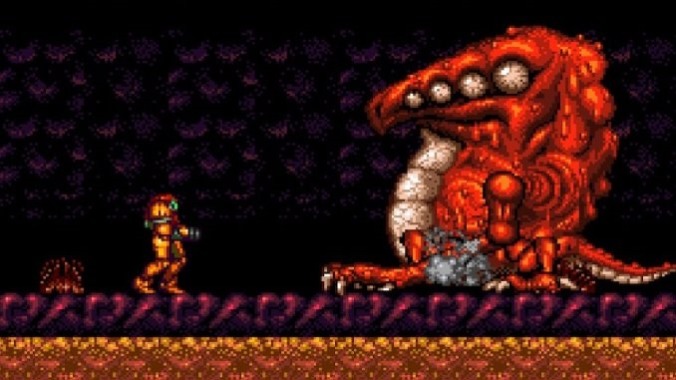Super Metroid Turns 30, and It's the Perfect Time for a Remaster

How do you update one of the great videogames of all time? Very carefully is both the joke answer and the reality of things. You can completely reimagine it so that it’s both the original and something completely new, like Capcom has done with games like Resident Evil 2, or you can simply update a game that holds up in the ways it needs, like with bringing it into the HD era and updating control scheme options and so on, like Nintendo did for Metroid Prime with 2023’s Metroid Prime Remastered. In either case, you need to be sure that it’s the correct decision: there were plenty of reasons, in the case of Resident Evil 2, to give it much more than just a new coat of paint and some quality of life updates. Conversely, Metroid Prime, in its original form, is as incredible in the present as it was over two decades ago, so much less was needed to bring it to modern audiences and let them see as much for themselves.
Which brings us to Super Metroid, a seminal game that first reached North America 30 years ago today, on April 18, 1994. However you feel about the term “Metroidvania”—I’m a “pathfinder” guy, myself, shout out to Brendan Hesse—you can’t deny the influence Super Metroid had on an entire genre of games, one that becomes a larger and larger chunk of the general game population by the day. Super Metroid might have sold all of 1.42 million copies in its original SNES run—no, really, that’s it, it was outsold by the Super Scope peripheral—but apparently the majority of those buys ended up spawning independent game studios. (And you can’t say that Castlevania: Symphony of the Night did the heavy lifting in the pairing at retail, either, because it somehow managed to be outsold by Super Metroid.)
Super Metroid has never been given a remake, but Nintendo has not been shy about remaking or remastering Metroid titles. Metroid Prime Remastered was already given as an example, but that’s not even the first reworked Metroid Prime release: the entire trilogy was put on the Wii, with the first two games, originally made for the GameCube, given revamped motion and pointer controls akin to those of the Wii-exclusive Metroid Prime 3: Corruption. Metroid II: Return of Samus was released on the Game Boy in 1991, and was remade from the ground up—like, completely remade, not just graphically, but in terms of content and gameplay, too—for the 3DS in 2017, as Metroid: Samus Returns, courtesy developer MercurySteam. And then there’s Metroid: Zero Mission, the first of the Metroid remakes, which was developed by Nintendo R&D1 in 2004 for the Game Boy Advance. This was a remake of the original 8-bit Metroid for the NES, made with the engine that powered the 32-bit Metroid Fusion on the GBA, and incorporated many items and gameplay elements that hadn’t come to the series until Super Metroid.
Each of these remakes was handled in a very different way. Metroid Prime’s was rightfully labeled as a remaster, because it was that more than anything else: it was rebuilt from the ground up for the Switch, yes, but that was more graphically than anything, and also so that the various control schemes from over the years, as well as new ones that blended the old and the new(er) ones, could be chosen by people with preferences what they felt was the definitive way of controlling this classic. Metroid: Samus Returns was not just rebuilt from the ground up for the 3DS, but is an entirely different game this time around. The same basic narrative and gameplay conceits are still there, and the core reason for Samus being on planet SR388 to kill off the metroids so that the Space Pirates can’t get their hands on anymore of them remains. But there are so many more boss fights, completely new to the series designs, and so much more game in general this time around. You never need to play the original Metroid Prime again if you’ve got the remaster, not unless you’re curious about just what it looked like on a GameCube, but Metroid II and Samus Returns are completely different experiences.
Metroid Zero Mission is, to me—a person who does want to know how things used to play and wants to understand their original context, but also understands that plenty of great, retro games can be updated and improved for the present—the platonic ideal of a remake. It both celebrated and enhanced its source material on more powerful hardware, without doing away with everything it was celebrating in the process of remaking it. It’s the original game, but with elements of later Metroid titles in the same style incorporated into the original maps, also updated to accommodate those new items and techniques, and all made to look much more detailed and simply better than was possible on 8-bit hardware. And yet it didn’t go nearly as far as changing things as Samus Returns: Zero Mission is still Metroid, but with tweaks that enhance the original experience both in spirit and in practice, instead of entirely its own thing.
On top of that, Zero Mission includes the original Metroid on it, too, making it available to play (in an emulated form on the cartridge) once you complete the remade version. That’s neat to have, but it also implies that Zero Mission isn’t a replacement for 1986’s Metroid so much as a companion to it. More remakes should do this sort of thing! Just as an example, there’s no reason a Switch cartridge couldn’t have the remade Link’s Awakening as well as the Game Boy and Game Boy Color versions of Link’s Awakening on it, too, but alas, not even something as great as that remake can fully live up to what Zero Mission managed over a decade before.







































